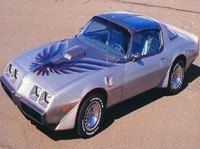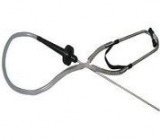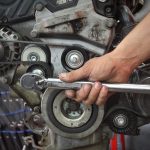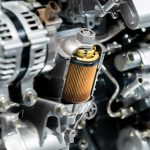In the 80s and 90s sub frame vehicle construction was not as solid as they are today. Squeaks and rattles are complained about less today then just a few years ago.
As a mechanic or even a vehicle owner trying to hunt down one of these annoying sounds directional hearing skills will be your most effective weapon.
Find Your Online Car Repair Manual Today! ->>
This page will discuss types of sounds that your car will make and help to dissect the noises to send you in the right direction to solve the problem. I would like to start off with an example of a rattle and squeak on my own personal car that drove me crazy and was difficult to find.
Squeaks and rattles on my T/A
This flexing caused a creek and pop and sometimes a squeak and rattle above the drivers head. Even the slightest irregularity in the road would activate this wide range of noises.
To hunt down this noise I had to remove the headliner from the vehicle. Removing the headliner did not reveal the source of the car noise. I had a friend drive it over a bumpy road while I moved around the interior to locate the source.
To make a long story short, a bonded interior seem on the rear roofline had broken loose and was allowing the two separate pieces of sheet metal to shift over each other when the body flexed.
Car squeaks and rattles
If the sound is dull the material is soft such as aluminum. If it is a sharp high pitch sound it will most likely be generated from an area that can vibrate quickly and made of harder materials.
Using engine noises as an example, a rod knock starts off as a soft thud that quickly becomes worse. This is because the softer bearing material reduces the noise between the 2 hardened steel objects (the rod and crankshaft). As the bearing material decreases the noise increases.
If a sound is increasing with the engines RPMs you know that the noise must be coming from something that is moving or rotating faster as the engine increases speed. This makes tracking the sound easier by reducing the possibilities.
If you can determine that the noise is occurring at half of the engine RPMs the source of the sound is from something such as camshaft or oil pumps drive that would rotate at half the speed of the crankshaft.
About strange car noises
The source of the noise may not always be originating from the location that is releasing the sound. Using the example on my 1979 Trans Am the sound appeared to be coming from over the drivers head. But in fact the broken seem was at the rear of the passenger compartment. The noise was traveling forward due to the flexing of the roofline.
Many car manufacturers will use sound insulation to prevent traveling of noises from one place to another. One of the main differences between baseline automobiles and luxury cars is the amount of sound insulation laid down at the factory.
Sound insulation material can be purchased in roles and is relatively inexpensive. You can add additional sound deadening material to your own vehicle that can greatly reduce the car noises that you hear.
This online car repair website offers many different kinds of information as well as more automotive diagnostic tips.









